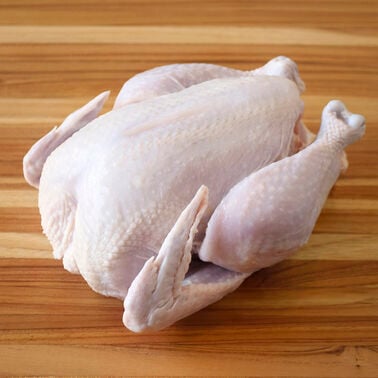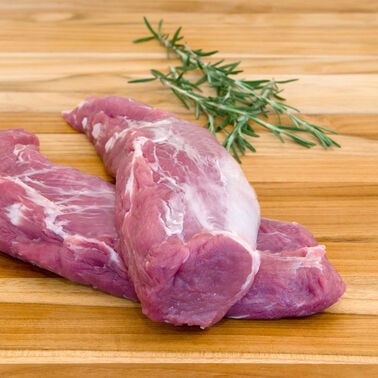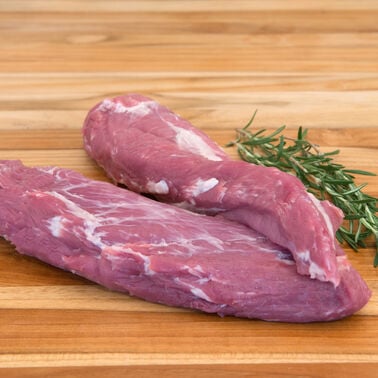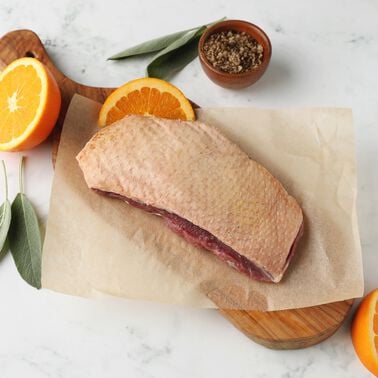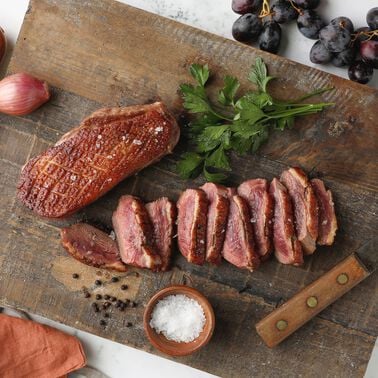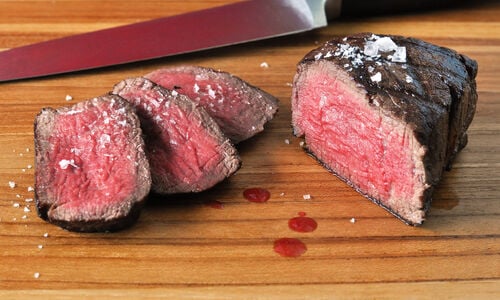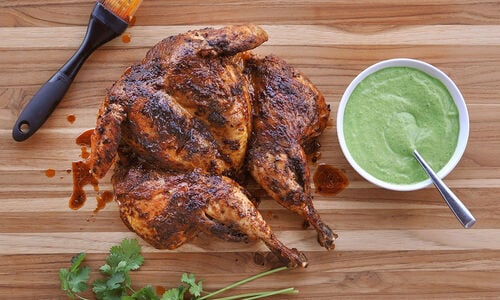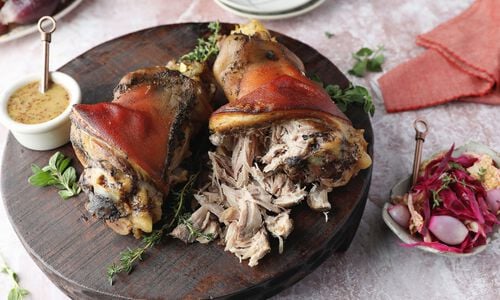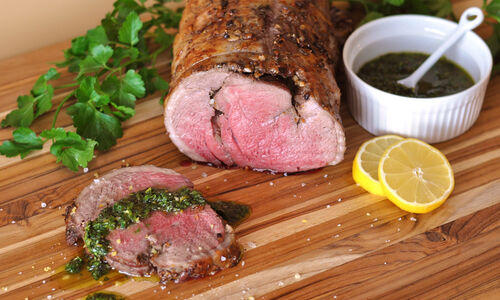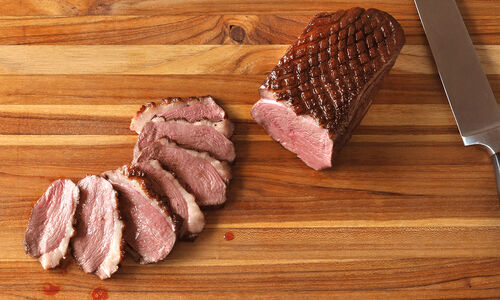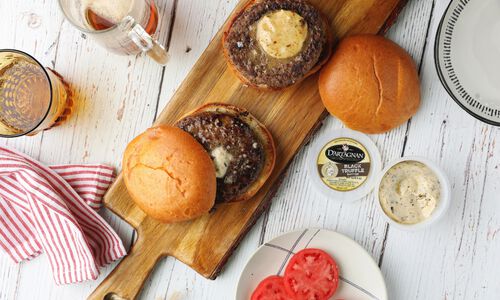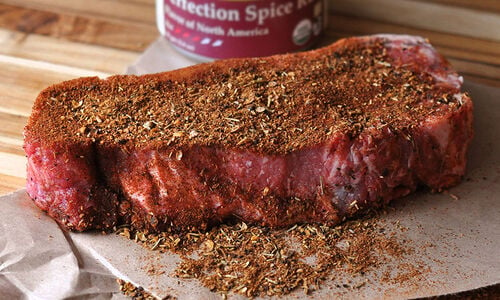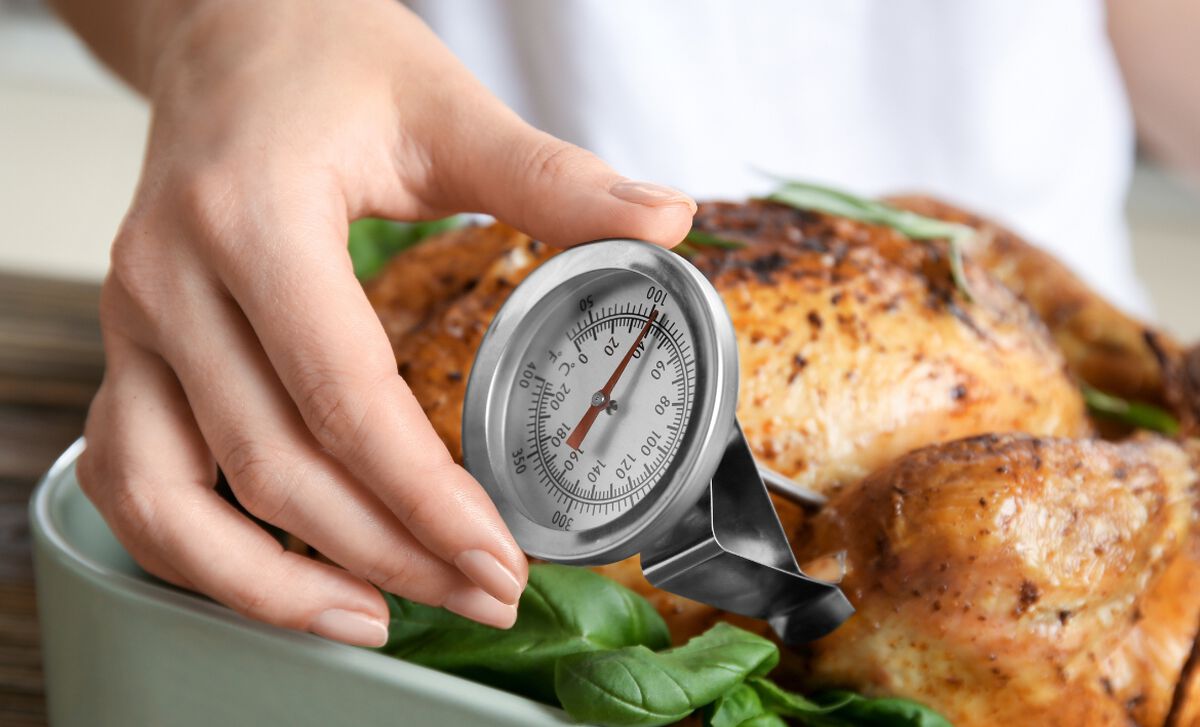
A quick note: Our recommendations may differ slightly from the ones approved by the USDA. However, while the USDA's recommendations ensure, in all instances, that there is absolutely no chance of microbial contamination, they also might result in cuts of meat that are too "done" for many meat connoisseurs, particularly when it comes to steak. That said, the USDA recommendations for ground meat, chicken, and eggs should be wholly trusted and followed.
Steak (Also: duck breast, lamb, veal chops and roasts)
A perfectly cooked steak, for the eager eater, is truly a wonderful thing, one that many die-hard steak enthusiasts consider sacred, even holy. Master your doneness, and you'll master a carnivore's heart. First, you should make sure that your cut of steak is close to room temperature before you start, so that your meat, while cooked to appropriate doneness, isn't cold on the inside.
If you want rare, or "black and blue" (seared on the outside and bright red on the inside), look for an internal temperature of 125-30 degrees Fahrenheit. Medium rare (pink inside and slightly red at center), cook to 130-140F. Medium steaks are tan and barely pink in the middle and should be 140-150F. At 150-160 degrees Fahrenheit, you're at a serious medium-well, and flirting with disaster.
Over an internal temperature of 160F (well done, cremated, killed), and you might as well pop your meat into the microwave or the deep fryer because it will have lost all those wonderful flavors, juices, and textures that we love in a good steak.
Chicken
You should always try to get your chicken to an internal temperature of 165F, at which it should be fully cooked. The key is to get it to this temperature without having the meat dry out. Using a convection oven is the best way to prevent this, however, not everyone has one at their disposal. One trick is to brine your bird in a salt-sugar solution for several hours (or overnight) before you put it in the oven. Another is to halve or quarter the chicken, then place the sections skin-side down in a skillet with hot oil, then finish the bird, still skin-side down, in the oven, making sure all the fat from the skin renders out and continually bastes the meat. Plus: crispy chicken skin!
Ground Meat
When your meat is ground up, it's much more susceptible to picking up evil those little microbes and bacteria that can make you sick, and no one wants that. Hence, make sure that you cook burgers, sausages meatballs and meatloaf to an internal temp of 160F. So, if you want that rare burger, you're just going to have to take your chances. But if you're getting your meat from an organic, trusted source (and not, say, Concentrated Animal Feeding Operations), those chances are going to be much better.
Pork (Not Ground)
For many years, the USDA recommended pork to be cooked to an internal temperature of 160F to avoid contamination, as with ground beef. However, many astute carnivores disagreed with this recommendation, because, if your meat is appropriately fresh, any bacteria will only be on the outside of your pork chop, steak or roast (if at all), and will die when the cut is seared. Thus, it's often safe to cook and enjoy your chops at a medium rare temperature of 130-140 degrees Fahrenheit. In May 2011, the USDA finally changed its tune and lowered its recommended cooking temperature for pork to 145 degrees. If you blanch at the sight of slightly pink pork, you can cook to a medium temperature of 140-150F. On our part, we adore a medium-rare pork roast.
One final tip: When you're done cooking and ready to take your meat's temperature, do not forget to let it rest! Since the protein continues to cook after you take it from the flame, your internal temp will continue to rise for a spell. Wait at least five to ten minutes before cutting into your meat after it's done, especially if you don't want to let all those wonderful, meaty juices to go to waste.
